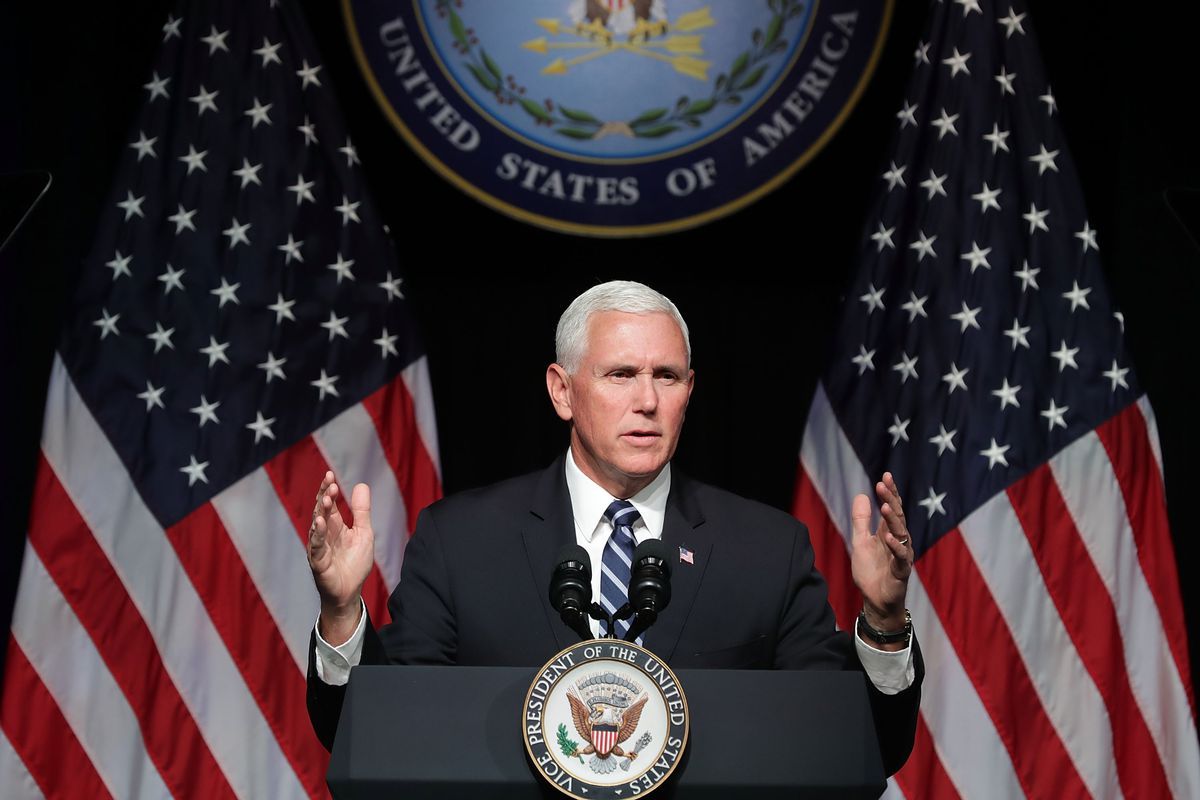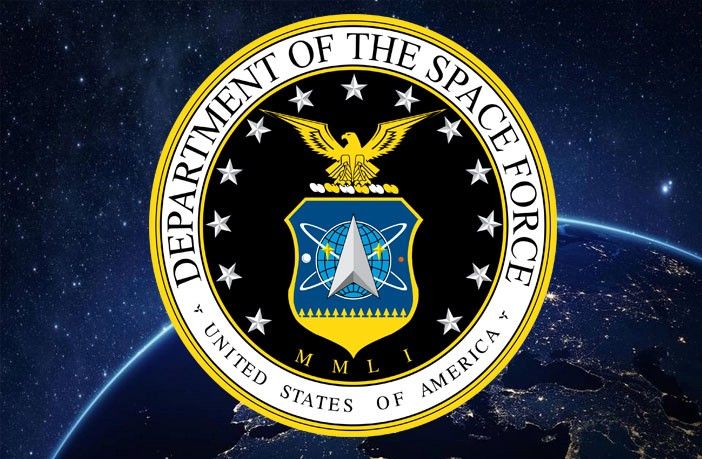The Pentagon’s Bottomless Money Pit
by Matt Taibbi March 17, 2019 (rollingstone.com)
• [Editor’s Note] This lengthy article from Rolling Stone demonstrates that the Deep State controlled heads of both Congress and the Defense Department are doing all they can to keep the Department of Defense’s budget and accounting practices in such a dysfunctional quagmire that trillions of dollars in unaccountable funding can continue to be funneled into the government’s secret space program at various levels.
• In 1787, the US Constitution mandated “a regular Statement and Account of the Receipts and Expenditures of all public Money shall be published from time to time.” By the late 1980’s and early 1990’s, hundreds of billions of tax dollars were being spent annually, and no one really knew where. No independent examiner had ever fully checked the government’s books.
• So in 1990, US Senators Chuck Grassley and John Glenn, and Rep. John Conyers authored the “Chief Financial Officers Act of 1990” (the “CFO Act”). This forced government agencies to name a CFO, conduct audits and create a “modern federal financial management structure.” Twenty-three agencies, from Defense to Labor to State, were ordered to begin submitting “department-wide annual audited financial statements” by 1994. In the first year, only six agencies and departments were able to pass. Within a few years, however, most were in compliance. By 2013, the Department of Defense was the only federal agency that had not submitted a financial statement.
• For the most part, the Department of Defense (“DoD”) does not know how much it spends. It has a handle on some things, like military pay, but in other places it’s clueless. None of its services — Navy, Air Force, Army, Marine Corps — use the same system to record transactions or monitor inventory. Each service has its own operations and management budget, its own payroll system, its own R&D budget and so on. It’s an empire of disconnected budgets, or “fiefdoms,” as one Senate staffer calls them.
• Ahead of misappropriation, fraud, theft, overruns, contracting corruption and other abuses that are almost certainly still going on, the Pentagon’s first problem is its books. It’s the world’s largest producer of wrong numbers, an ingenious bureaucratic defense system that hides all the other rats’ nests underneath.
• In 2011, Congress passed the Budget Control Act which caps the defense budget at roughly 54 percent of discretionary spending. Almost immediately, the DoD began using so-called Overseas Contingency Operations (OCO), a second checking account that can be raised without limit. In 2019, the Pentagon secured $617 billion in “base” budget money, which puts it in technical compliance with the Budget Control law. Then it used the OCO slush fund to generate another $69 billion. Other ‘defense’ departments received additional funding: the VA ($83 billion), Homeland Security ($46 billion), the National Nuclear Security Administration ($21.9 billion). Then the DoD drew from the OCO fund again for anti-ISIS operations. The resulting actual defense outlay is over $855 billion, and that’s just what we know about. Programs like the CIA’s drones are part of the secret “black budget” of the intelligence community (which this article doesn’t go into).
• The long-standing Antideficiency Act makes it illegal for any government agency to spend money appropriated for one purpose on a different program. Yet the military routinely commingles its various pots of money. The DoD is supposed to give its unspent money back to Congress. Instead, the DoD created a computer program algorithm called Mechanization of Contract Administration Services that spends “old money” first, i.e.: money from whatever funds were about to expire – in clear violation of the law. The DoD simply orders its accountants to make the numbers fit to avoid having to return any money.
• DoD accountants are told by superiors that if they cannot find invoices or contracts to prove the various expenses they should execute “unsubstantiated change actions”, i.e.: make them up. The accountants systematically “plug” in fake numbers to match the payment schedules handed down by the Treasury. These fixes are called “journal voucher adjustments”, “forced-balance entries”, “workarounds”, or “plugs.” Thus, the year-end financial statements submitted to Congress are fictions, a form of systematic accounting fraud that Congress has quietly tolerated for decades.
• A 2017 Michigan State University study revealed $21 trillion in plugs over a 17-year period. The Pentagon didn’t even receive that much money during the time period in question. In 2015, the Army with an annual budget of $122 billion, generated $6.5 trillion in accounting plugs – or 54 times its annual budget.
• The Pentagon compounded its lack of oversight by reducing its staff of internal criminal investigators. “No other federal agency could get away with this,” said one Senate staffer. The military has been told repeatedly to stop plugging and develop more rational accounting systems.
• The ubiquitous plugging and quantity of bad numbers in the Pentagon’s books are so massive that it will take a labor of the ages to untangle. Next to the enormously bloated DoD budget itself, the attempted accounting reconciliation effort has created a second massive DoD expenditure – accounting reformation.
• To appear as though it is attempting to cooperate with Congressional mandates, in 1991 the DoD created the Defense Finance and Accounting Service (DFAS), which would collect financial reports from all of the different DoD sub-agencies at the end of each month, without bothering to adjust its accounting rules. But the Pentagon’s books are so choked with bad data that discovering abuses in real time is virtually impossible.
• The Air Force awarded a “big four” accounting firm, Deloitte, $800 million to help with “audit preparation.” The Navy countered with a $980 million audit-readiness contract spread across all four accounting firms: Deloitte, Booz Allen Hamilton, Accenture and KPMG. In 2003, Defense comptroller Dov Zakheim told the House Budget Committee, “We anticipate having a clean audit by 2007.” Soon after disavowing that promise, he said, “The further we dug . . . the more difficulties turned up.” Taxpayers were paying gargantuan sums to private accounting firms just to write reports about how previous recommendations had been ignored.
• In 2005, the Pentagon began to provide Congress with Financial Improvement and Audit Readiness (FIAR) reports. These reports’ purpose was to assure Congress that the DoD was getting closer to sorting all of this stuff out. December 2005: “Progress has been achieved.” September 2006: “Progress has been made.” September 2007: “Progress has been made in several areas.” March 2008: “Substantial progress has been made.” March 2009: “Significant progress has been made, but much needs to be done.”
• In an attempt to standardize the military’s payroll and personnel records system, in 2009 the DoD created the Defense Integrated Military Human Resources System. Over 12 years and more than $1 billion in expenditures later, it was scrapped. Earlier, in 2005, the Air Force set out to buy a standardized computer system from Oracle called the Expeditionary Combat Support System. It took 7 years and more than $1 billion for that plan to be scrapped.
• Despite the DoD’s 60,000 financial-management employees who’ve had 21 years to producing financial statements, by the mid-2000s the task was given to 200 auditors from the DoD inspector general to create a single annual financial statement. They made some helpful recommendations, but it didn’t get very far before they concluded that an audit was not possible. In 2011, then-Defense comptroller Robert Hale confessed to Congress, “We don’t really fully understand in the Department of Defense what you have to do to pass an audit for military service, because we have never done it.” You’ve heard of “too big to fail”. The DoD’s universe is too big to count. One exasperated DoD official complained, “Impossible. . . . We can’t do it. . . . It’s too big.”
• The annual DoD audit has brought enormously expensive accounting firms into the family of permanent high-end military contractors like Lockheed Martin, General Dynamics, Boeing and Raytheon. One estimate puts the annual cost for accounting at about a billion: $400 million a year for audits by firms like Ernst & Young, and about $600 million for firms like Deloitte to fix problems identified by said audits.
• In April 2016, U.S. Comptroller General Gene Dodaro testified before the Senate that the Pentagon had spent up to $10 billion to modernize its accounting systems. Those attempts, he said, had “not yielded positive results.” Asked how much progress has been made toward creating a workable accounting system at the Pentagon, Dodaro says, “At my level, I would have to say zero.”
• One thing that the audits did uncover was a tremendous amount of waste. The DoD found about $125 billion in administrative waste. Inspectors found “at least” $6 billion to $8 billion in waste in the Iraq campaign, and said that $15 billion of waste found in the Afghan theater was probably “only a portion” of the total lost.
• By the end of 2018, the DoD did submit an audit by some 1,200 auditors at a cost of $400 million. It was, however, a failure and did not “pass”. The auditors could offer no opinion, saying that the military’s acronymic accounting system was too illogical to penetrate. Deputy Secretary of Defense Patrick Shanahan said it was nothing to worry about, because “we never expected to pass it.” As one Senate staffer put it, “These systems were not designed to be audited.” Remarked Senator Chuck Grassley: “Based on the track record, it seems like they don’t want to fix it.”
• The Pentagon bureaucracy has no reliable method of recording financial transactions. Some of its accounting programs are still using COBOL, a computing language that was cutting-edge in 1959. The DoD still hasn’t progressed to serial numbered bar codes to tracking inventory. Assets tend to vanish on financial ledgers. A few years ago the DoD admitted to losing track of 478 buildings and 39 Black Hawk helicopters. A retired Air Force auditor said that the Air Force has no idea how much of anything it has at any given time. However, since 2006 when the Air Force accidentally loaded six nuclear weapons in a B-52 and flew them across the country, unbeknownst to the crew, it has made a special effort to track its nuclear weapons.
• In the 1980’s, Senator Grassley was inspired to scrutinize DoD accounting due to reports that it was spending $640 for toilet seats and $436 for hammers. Today, the DoD is still spending $10,000 apiece for 3D printed airborne toilet-seat covers and $1,280 each on reheatable drinking cups. In 1992, the military was under pressure to resolve its “poor cost estimating”, and created a middleman with the power to set prices and choose subcontractors known as the “prime vendor”. This system became corrupted and only inflated prices even further. By 2004, the Pentagon was spending $7.4 billion annually on prime-vendor purchases. In 2005 it was reported that the military was buying 85-cent ice trays from prime vendors for $20 apiece, and had purchased nine refrigerators from a prime vendor for $32,642.
• In 1997, the Army spent $4 billion on the Global Combat Support System ‘audit-readiness program’ to centralize its accounting system, and the Marine Corp spent $1 billion on a similar system. In 2009, the General Accounting Office complained about the $6 billion that had been spent in audit preparation with no results. In 2010, Chuck Grassley created an amendment to the National Defense Authorization Act to stop the runaway mobilization of hundreds of auditors that the CFO Act still mandated, creating a Catch-22 between the two opposing laws.
• Three decades into the effort, we’ve only been spending billions of dollars to get nowhere in one of the most expensive jokes any nation has played on itself. “When everything’s always a mystery,” says Grassley, “nothing ever has to be solved.”
• Even if there were a way for the DoD to reorganize its accounting practices, it would inevitably be mired in politics. There is a strong bloc of Congressmen whose office depends on campaign contributions from the defense sector (even though defense contractors themselves cannot make campaign contributions). They hold up any type of withholding on defense expenditures in committees such as Armed Services or Appropriations. Says one Congressional staffer, “You can’t get the Pentagon to take an audit seriously unless you threaten to stop funding, and you can’t stop funding without campaign finance reform.” Senator Bernie Sanders laments the unwillingness of Congress to take the real steps needed to enforce auditing compliance. The system of campaign contributions that keeps key committees captive will lock this problem in place until there’s reform on that end. “When it comes to the massive waste, fraud and abuse at the Pentagon, there’s a deafening silence,” says Sanders.
• The military has become an unstoppable mechanism for absorbing trillions of taxpayer dollars and using them in the most inefficient manner possible. The armed services are filling warehouses for some programs with “1,000 years’ worth of inventory,” as one Navy logistics officer recently revealed. According to a Congressional staffer: “[The] DoD loves to find inefficiencies. It just means more they can spend.”
A retired Air Force auditor — we’ll call him Andy — tells a story about a thing that happened at Ogden Air Force Base, Utah. Sometime in early 2001, something went wrong with a base inventory order. Andy thinks it was a simple data-entry error. “Someone ordered five of something,” he says, “and it came out as an order for 999,000.” He laughs. “It was probably just something the machine defaulted to. Type in an order for a part the wrong way, and it comes out all frickin’ nines in every field.” Nobody actually delivered a monster load of parts. But the faulty transaction — the paper trail for a phantom inventory adjustment never made — started moving through the Air Force’s maze of internal accounting systems anyway. A junior-level logistics officer caught it before it went out of house. Andy remembers the incident because, as a souvenir, he kept the June 28th, 2001, email that circulated about it in the Air Force accounting world, in which the dollar value of the error was discussed.
Wanted to keep you all informed of the massive inventory adjustment processed at [Ogden] on Wednesday of this week. It isn’t as bad as we first thought ($8.5 trillion). The hit . . . $3.9 trillion instead of the $8.5 trillion as we first thought.
The Air Force, which had an $85 billion budget that year, nearly created in one stroke an accounting error more than a third the size of the U.S. GDP, which was just over $10 trillion in 2001. Nobody lost money. It was just a paper error, one that was caught.
“Even the Air Force notices a trillion-dollar error,” Andy says with a laugh. “Now, if it had been a billion, it might have gone through.”
Years later, Andy watched as another massive accounting issue made its way into the military bureaucracy. The Air Force changed one of its financial reporting systems, and after the change, the service showed a negative number for inventory — everything from engine cores to landing gear — in transit.
Freaked out, because you can’t have a negative number of things in transit, Air Force accountants went back and tried to reverse the mistake. In doing so, they somehow ended up adding more than $4 billion in value to the Air Force’s overall spare-parts inventory in a single month.
This suspicious number is still there. You can see a sudden spike in the Air Force’s working-capital fund’s stagnant spare-parts numbers. It was $23.2 billion in 2015, $23.3 billion in 2016, $24.4 billion in 2017, and then suddenly $28.8 billion in September 2018.
That doesn’t mean money was lost, or stolen. It does, however, mean the Air Force probably has less inventory on hand than it thinks it does.
Now retired, Andy sometimes visits his neighborhood library, which uses RFID smart labels, or radio frequency identification, allowing it to know where all its books are at all times.
Meanwhile, the Air Force, which has a $156 billion annual budget, still doesn’t always use serial numbers. It has no idea how much of almost anything it has at any given time. Nuclear weapons are the exception, and it started electronically tagging those only after two extraordinary mistakes, in 2006 and 2007. In the first, the Air Force accidentally loaded six nuclear weapons in a B-52 and flew them across the country, unbeknownst to the crew. In the other, the services sent nuclear nose cones by mistake to Taiwan, which had asked for helicopter batteries.
“What kind of an organization,” Andy asks, “doesn’t keep track of $20 billion in inventory?”
Despite being the taxpayers’ greatest investment — more than $700 billion a year — the Department of Defense has remained an organizational black box throughout its history. It’s repelled generations of official inquiries, the latest being an audit three decades in the making, mainly by scrambling its accounting into such a mess that it may never be untangled.
Ahead of misappropriation, fraud, theft, overruns, contracting corruption and other abuses that are almost certainly still going on, the Pentagon’s first problem is its books. It’s the world’s largest producer of wrong numbers, an ingenious bureaucratic defense system that hides all the other rats’ nests underneath. Meet the Gordian knot of legend, brought to life in modern America.
FAIR USE NOTICE: This page contains copyrighted material the use of which has not been specifically authorized by the copyright owner. ExoNews.org distributes this material for the purpose of news reporting, educational research, comment and criticism, constituting Fair Use under 17 U.S.C § 107. Please contact the Editor at ExoNews with any copyright issue.




